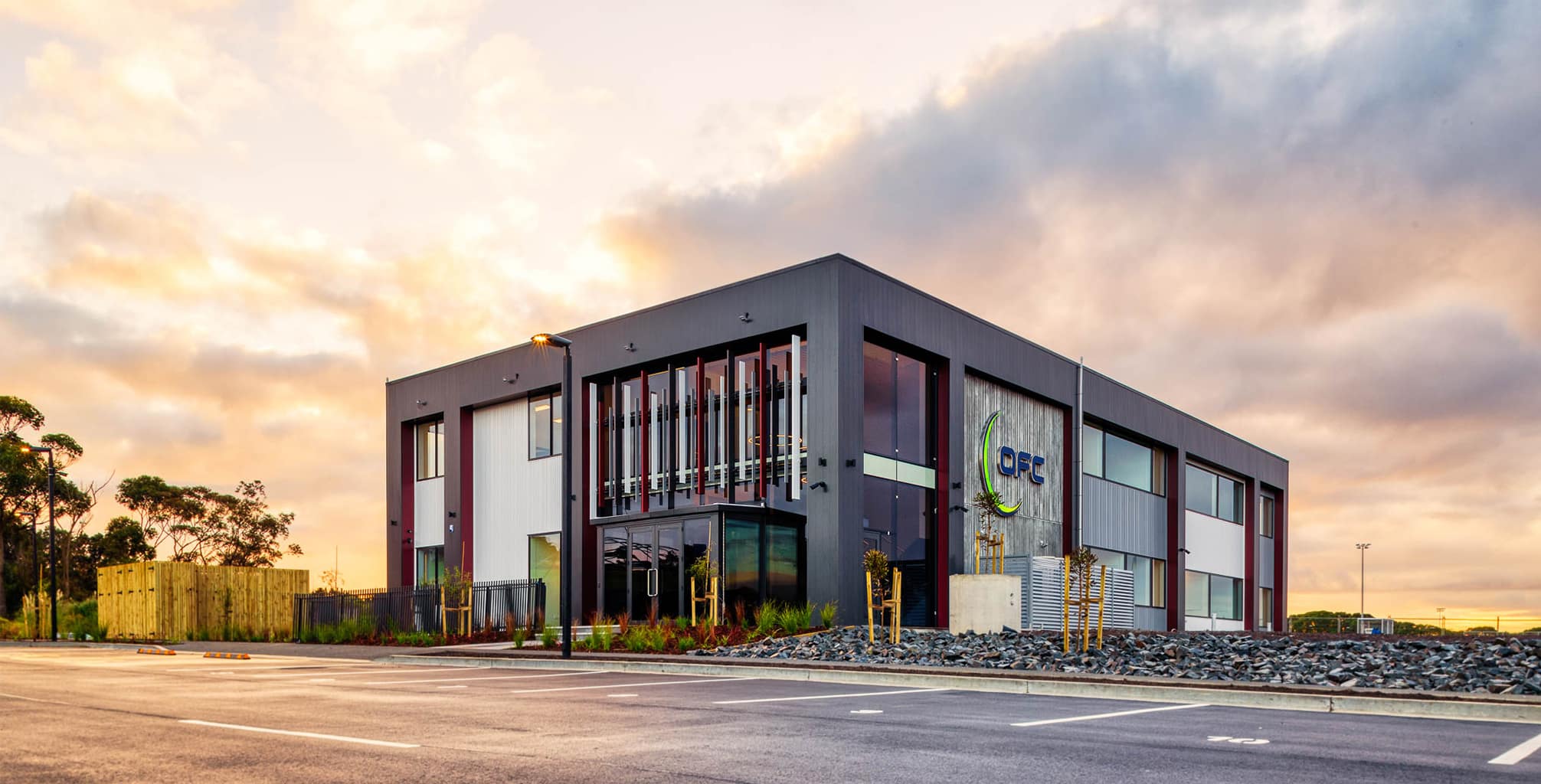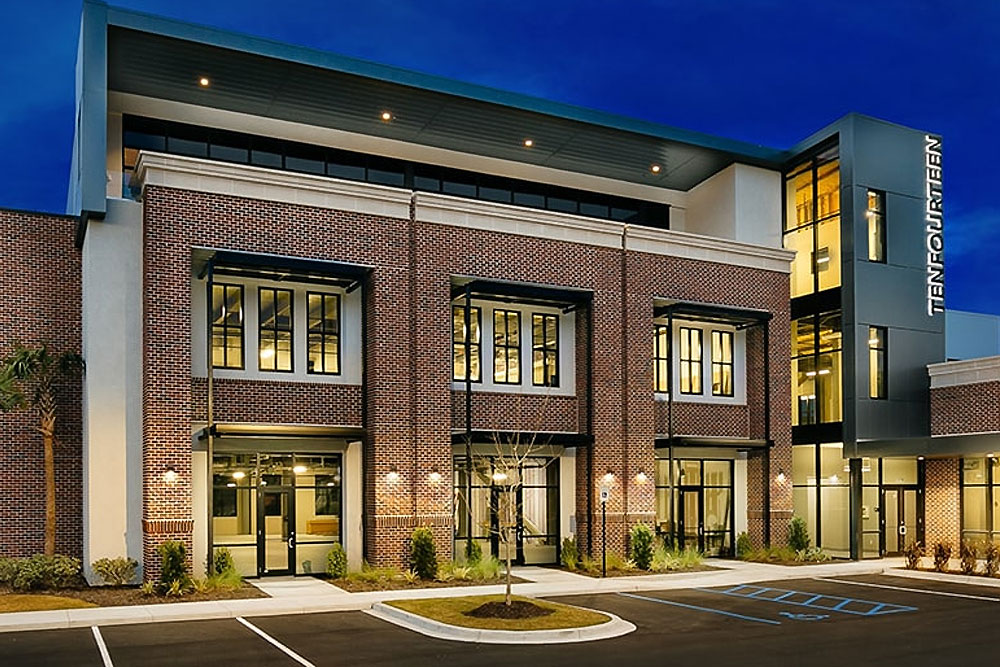commercial architects and Their Role in Workspace Layout
Wiki Article
Discover the Innovative Solutions Offered by Commercial Architects for Your Next Project
Commercial architects play a necessary role in forming the constructed environment. They blend functionality with visual allure, producing spaces that resonate with brand identity. These specialists employ cutting-edge layout solutions, sustainable methods, and advanced technologies to enhance customer experiences. Their collective strategy assurances positioning with customer visions and functional needs. The degree of their solutions commonly extends beyond design. The following action in recognizing exactly how these architects browse complicated project demands might stun you.Comprehending the Role of Commercial Architects
The duty of business architects may differ depending on the specific task, their key feature rotates around developing practical and visually enticing spaces for services. These experts are charged with recognizing the distinct requirements of each customer, whether it be a retail store, workplace structure, or industrial facility. They perform complete website analyses and collaborate with stakeholders to guarantee that the layout lines up with business objectives and brand identity.Commercial architects likewise navigate various regulative demands, securing conformity with zoning legislations and structure codes. Their know-how includes creating sustainable layouts that promote energy effectiveness and environmental duty. Additionally, they manage the project's timeline and budget, collaborating with specialists and designers throughout the building process. By mixing creative thinking with technological understanding, business architects play an essential function in changing theoretical ideas right into concrete truths, ultimately enhancing the performance and allure of commercial spaces.Ingenious Style Solutions for Distinct Rooms
As industrial rooms increasingly demand distinctiveness to stick out in competitive markets, cutting-edge layout solutions have ended up being crucial for architects. These experts leverage their creative thinking and technological knowledge to craft unique settings that mirror brand identification and enhance individual experience. By integrating advanced innovation and materials, business architects can change ordinary spaces into captivating places that involve customers and inspire employees.Architects employ different strategies, such as flexible reuse, which rejuvenates existing frameworks while maintaining their historical relevance. They likewise discover unusual layouts and multifunctional areas that satisfy varied needs, ensuring adaptability for future growth.Furthermore, the unification of biophilic design-- bringing nature inside your home-- produces welcoming ambiences that advertise wellness - commercial architects. This attention to information in cutting-edge layout not just addresses aesthetic problems however likewise fosters area and cooperation. Eventually, these tailored remedies enable organizations to grow in an ever-evolving landscape, setting them apart from competitorsSustainable Style Practices
Sustainable architecture practices have become a critical emphasis for commercial architects looking for to create impactful styles that reverberate with environmental stewardship. These techniques focus on the usage of eco-friendly resources, power performance, and marginal waste, mirroring a dedication to minimizing the eco-friendly footprint of structures. Architects incorporate materials that are sustainably sourced or reused, making sure that construction methods align with eco-friendly principles.Furthermore, the combination of eco-friendly roofs and wall surfaces boosts biodiversity while boosting energy efficiency. Efficient water administration systems, such as rain harvesting, add to sustainability by preserving water sources. All-natural ventilation and daylighting approaches are additionally utilized to enhance indoor atmospheres, reducing dependence on synthetic home heating and lights.Integrating Innovation in Architectural Styles
A boosting variety of industrial architects are accepting innovation as a transformative element in architectural layout. By leveraging sophisticated software application tools such as Structure Details Modeling (BIM), architects can produce comprehensive 3D depictions of tasks, allowing for improved visualization and cooperation amongst stakeholders. This modern technology helps with real-time modifications, lessening mistakes and improving the style process.Additionally, architects are incorporating clever building technologies into their layouts, which boost energy effectiveness and occupant comfort. Attributes such as automated lights, climate control, and security systems can be effortlessly included, advertising sustainable practices and minimizing operational costs.The usage of digital and enhanced fact likewise permits clients to experience layouts prior to construction starts, offering important insights into spatial relationships and aesthetic selections. Ultimately, the integration of modern technology in architectural styles not only promotes technology yet also assures that jobs are implemented with accuracy and lined up with modern needs.
Project Monitoring and Sychronisation Solutions
Reliable job monitoring and control solutions are essential for the effective execution of commercial building tasks. These services guarantee that all aspects of a task, from first design to final building, are flawlessly incorporated. Commercial architects play a considerable function in coordinating in between various stakeholders, consisting of clients, service providers, and distributors, to keep clear communication and alignment on task goals.By carrying out structured methodologies, architects can manage timelines, budgets, and resources effectively, minimizing delays and price overruns. They utilize task monitoring software and tools to track development, take care of paperwork, and help with cooperation amongst team members.Additionally, these solutions include danger analysis and mitigation approaches, verifying potential obstacles are determined and dealt with proactively. The result is a structured process that enhances total job efficiency and quality, eventually bring about a successful end result that satisfies the customer's vision and assumptions.Governing Compliance and Zoning Aid
Efficient regulatory compliance and zoning assistance are vital for the success of any type of commercial task. Architects should have a deep understanding of regional guidelines and zoning regulations to guide customers via the complexities of the authorization procedure. This experience not just guarantees adherence to legal demands yet additionally assists maximize project design and performance.Browsing Local Rules
How can business architects ensure their designs line up with neighborhood laws? By remaining educated regarding the ever-evolving landscape of Click Here building ordinance and local regulations, architects play an important duty in guaranteeing compliance. They carry out comprehensive research study to understand the certain policies governing products, safety requirements, and construction techniques relevant to every job. Teaming up closely with local authorities, commercial architects can steer through the complexities of regulative structures effectively. They likewise assist in required authorizations and inspections, streamlining the authorization procedure. This proactive approach not only reduces potential lawful difficulties yet additionally boosts task performance. Inevitably, their competence in maneuvering regional regulations empowers customers to recognize their vision while sticking to all needed standards and standards.
Zoning Regulation Know-how
Zoning his response regulation proficiency is vital for commercial architects guiding with the intricacies of land usage regulations. These architects possess comprehensive understanding of local zoning codes, which regulate residential or commercial property development, land usage, and building specifications. By understanding these guidelines, they help customers navigate the often intricate approval processes required for building and construction projects. Their competence assurances conformity with zoning laws, minimizing the danger of task hold-ups or lawful complications.Additionally, business architects give important support in acquiring required permits and differences, promoting smoother communications commercial architects with regional authorities. They also provide calculated recommendations to maximize site layout and make best use of the potential of a property while adhering to zoning constraints. Inevitably, their zoning legislation effectiveness plays a crucial duty in the effective awareness of business jobs.Collaborative Strategies With Customers and Stakeholders
Effective commercial design pivots on the ability to cultivate strong collaboration with customers and stakeholders throughout the design process - commercial architects. Architects participate in open discussions, making certain that all celebrations' visions and needs are incorporated into the task. This collaborative approach starts in the first stages, where architects conduct workshops and brainstorming sessions, allowing clients to express their objectives and concerns.Stakeholder input is equally important; architects often arrange conferences with neighborhood members, regional governments, and various other relevant entities to gather varied point of views. By using visualization tools, such as 3D modeling, architects promote better understanding and communication.This iterative responses procedure not only enhances design high quality however likewise develops trust fund, bring about even more effective end results. Ultimately, the collaborative viewpoint of industrial architects transforms ideas into functional spaces that reflect the goals of clients and the broader neighborhood, ensuring a harmonious relationship throughout the job lifecycle
Frequently Asked Inquiries
What Is the Normal Timeline for a Business Architecture Job?
The common timeline for an industrial style job varies, typically spanning 6 to 18 months. Factors affecting this period consist of job intricacy, governing approvals, and client responsiveness, affecting each phase from layout to building and construction conclusion.Exactly How Do Commercial Architects Charge for Their Solutions?
Commercial architects generally bill based upon job scope, intricacy, and size. Typical cost structures consist of per hour rates, taken care of fees, or percentage-based charges computed from the complete building cost, making certain openness and placement with customer assumptions.Can Commercial Architects Assist With Interior Design?
Commercial architects can without a doubt assist with interior decoration, integrating capability and looks. Their competence warranties cohesive spaces that line up with building vision, boosting user experience while meeting regulative demands and client goals with cutting-edge layout solutions.What Sorts of Clients Do Commercial Architects Typically Collaborate With?
Commercial architects usually work together with varied customers, consisting of organizations, federal government entities, instructional establishments, and charitable companies (commercial architects). Each customer looks for customized building remedies to fulfill details useful and visual requirements for their jobs and atmospheresHow Do Commercial Architects Stay Updated With Style Patterns?
Commercial architects stay upgraded with style fads with continual education, participating in sector conferences, engaging in expert networks, and looking into arising modern technologies. They additionally collaborate with various other specialists to gain insights right into cutting-edge products and layout practices.Report this wiki page